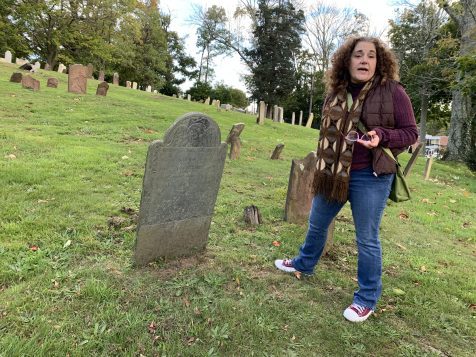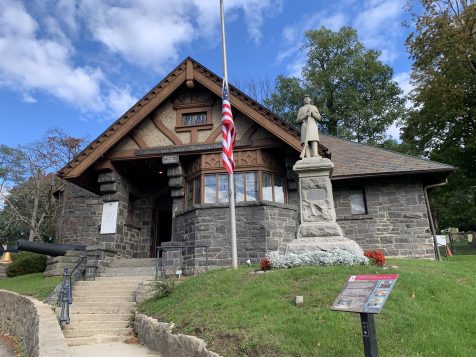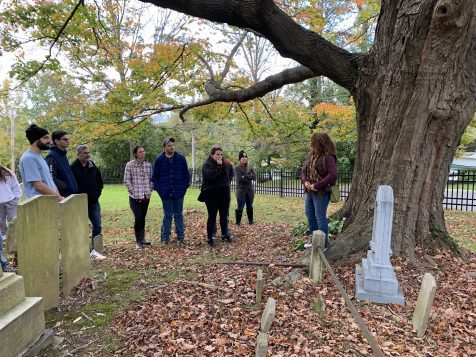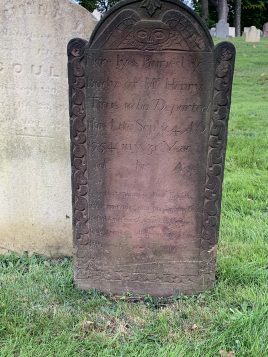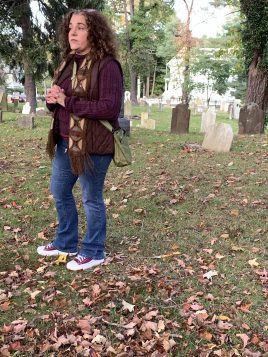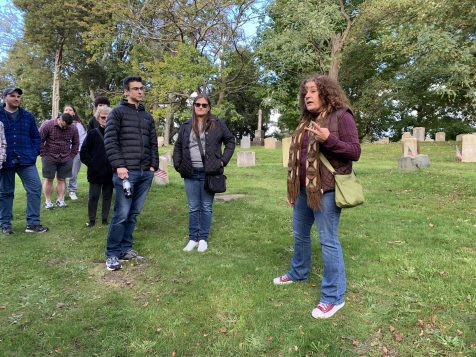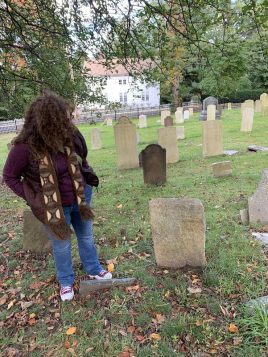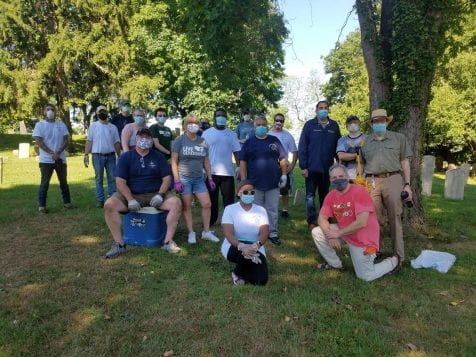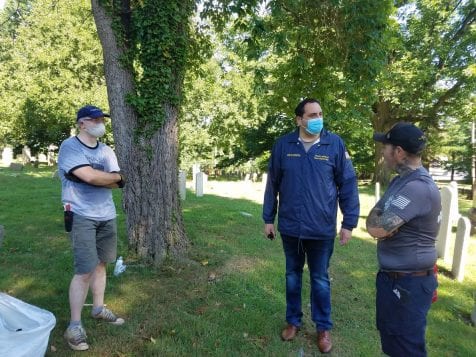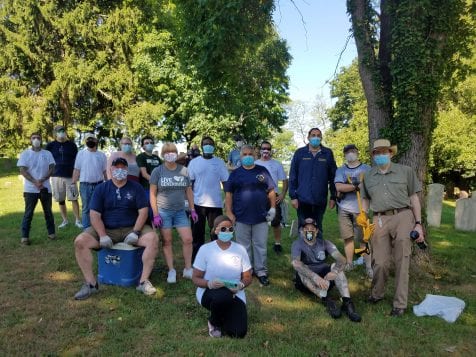By Tara Mae
The past whispers lessons to those willing to listen in the present.
A spooky stroll through Huntington’s Old Burying Ground unearths the town’s human history. Organized by the Huntington Historical Society, participants first gather inside the Soldiers and Sailors Memorial Building, located at 228 Main Street. Built in 1892 as a memorial to residents who perished in the Civil War, it housed the town’s first library and now hosts Huntington’s History and Decorative Art Museum.
As leaves crunch underfoot and the sky fades overhead, tour guide Erika Verrill Burke leads participants on a traipse back in time. Winding through Huntington’s earliest public burial ground, established soon after the town was founded in 1653, she introduces individuals who may have once trod this terrain.
Approximately 7500 people may be buried here, with roughly 1700 surviving tombstones. By the mid-1850s the rural cemetery on New York Avenue had opened, and the population of the Ground plateaued. Sporadic interments occurred over the years, mainly of people who had relatives already resting there, such as Nelson Smith. A co-founder of Huntington’s first AME Church, he died in 1888 and was buried, per his request, at the Old Burying Ground to be with his first wife who had perished in childbirth. The last burial was circa 1954.
Notably, this location is not a cemetery, which technically refers to a planned area specifically designed to inter the dead. Rather, the Old Burying Ground is simply a communal space where Huntington residents of yore laid their loved ones to rest.
“One of the really great things about the Old Burying Ground is its egalitarianism; this is a nondenominational secular burying ground; rich and poor, young and old, free and enslaved are buried here,” explained Verrill Burke.
Up hills and through paths marked only by memory and the footsteps of those who went before, Verrill Burke guides her audience into the past. Covering the scope of the site, as the group maneuvers among the gravestones, she excavates stories that survive through their retelling. Special occurrences and ordinary persons are enlivened in the process.
“We walk the entire grounds, discussing early Huntington history, and some key people and events that occurred in and around the burying ground,” she said. “Also discussed are some broader topics such as burying practices, the American Revolution on Long Island, and enslavement on Long Island.”
Veterans of wars are buried near casualties of disease. Entire family sagas are condensed to the clues inherent in epitaphs: men who were lost to pestilence; women who died in childbirth; children who died of preventable illnesses. A single family plot may encapsulate all of these calamities.
Citizens overlooked by posterity are in repose near founding family members of the Brookhaven settlement such as Ketchum, Conklin, and Platt.
The Ground’s oldest identifiable grave belongs to perhaps a lesser known name: Silas Sammis. Born in 1676, he died in 1723; his tombstone is a roughly hewn rock with his name, birthday, and death date painstakingly carved into it.
“Someone cared enough to drag a rock here,” Verrill Burke said.
Evidence of love is engraved into many elements of the Old Burying Ground; personal tributes and declarations of mournful devotion are interspersed with more traditional, yet poignant, sayings.
The grave markers themselves offer insights beyond what is etched into surfaces; their very essence speaks to monetary wealth and social standing, economic growth and resource accessibility.
Many early headstones are made from sandstone, which can be found on Long Island. Later headstones are made of granite or marble, reflecting the town’s growing prosperity, since the materials were imported from other states.
Free Blacks have gravestones similar to their white counterparts. Enslaved people were buried with the families of their enslavers; their plots are generally marked by rough field stones.
The disparity in circumstance invites onlookers to examine their collective heritage from multiple points of view. Trials and triumphs, as shared by Verrill Burke, create a narrative that coalesces into a deeper understanding of how personal anecdotes adorn the annals of history.
“The tour appeals to our imagination! The public is invited to imagine what life was like for the earlier residents of Huntington. I also think that discussing the life and death of certain residents helps us feel a more tangible connection to the past, and a more relatable view of the human condition. Times may change, but people are people,” she said.
It is this interpersonal connection that Verrill Burke emphasizes with the human interest she highlights. More than enchanting listeners with legend and lore, she enraptures them with the tenacity of truth and a winsome wit.
An engaging orator, Verill Burke is a public interest lawyer by trade. She has been a guide since 2014, but the tours have been going on for many years.
Verrill Burke became involved with the Huntington Historical Society while on sabbatical from her job, volunteering first for different programs, including its Passport to the Past camp for children.
“I wanted to do field trips for the campers, and the burial ground seemed like a good fit. Kids love all things macabre and so do I,” she said. The popular tours have since found fans of all ages.
Intrigued by the Old Burying Ground, Verrill Burke sought the knowledge of Huntington Town Historian Robert Hughes and the late Huntington Historical Society Historian Rex Metcalf. She also scoured the Society’s archives, one of the largest collections on Long Island. From there, she developed a routine that encompasses centuries and sense memories.
“People are fascinated. Even if individuals are coming along to keep a history buff friend company, there is something of interest for almost everyone on this tour, and questions are very, very welcome (that’s how I know everyone is staying awake!),” Verrill Burke said.
This meander through remembrance is next scheduled for Saturday, October 28, at 3 p.m. Tickets are $10 for members, $15 for nonmembers, and $5 for children. They must be purchased in advance and are not sold the day of the tour. To make reservations, please visit www.huntingtonhistoricalsociety.org. For more information, call 631-427-7045.

